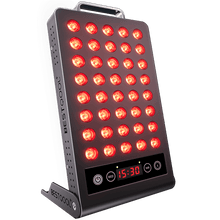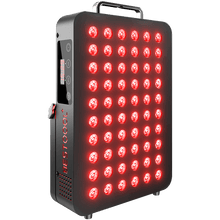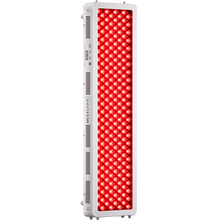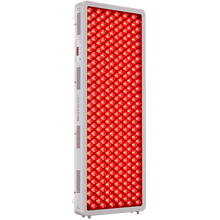Hang gliding is an exciting sport that requires physical, neuromuscular, and environmental endurance. However, the high altitude of the sport and the unpredictable nature of the landing conditions can lead to the risk of musculoskeletal injuries, neuromuscular strains, or environmental stressors[1].

One of the interesting new recovery tools emerging within the sports recovery and injury prevention field is red light therapy (RLT). By maximizing cellular function, minimizing inflammation, and speeding up healing, RLT could revolutionize recovery for hang gliders. This article examines how RLT can help with recovery, prevent injury, and maximize performance for hang-gliding athletes.
Common Musculoskeletal Injuries in Hang Gliding
Proximal Humerus Fractures (28%)
Proximal humerus fractures happen when pilots reach too far out during a landing, usually to halt a descent of their glider. Falling against a hard surface at high force can cause bird fractures of the upper arm, which include pain, inability to move, and long return to play times. Preventive measures include
- Resistance training to strengthen shoulder stabilizers
- Employing controlled descent techniques to minimize impact forces.
- 4 dresses in padded jackets to reduce injury hazards.
Thoracolumbar Compression Fractures (19%)
These spinal fractures occur when pilots undergo axial loading—vertical force on the spine—because of instances such as hard landings or turbulence strong enough to shift staff in their seats. The thoracolumbar region is particularly vulnerable because it is subject to transitions in the spine. Safe landings need;
- Training in a way that redistributes impact evenly.
- Adding exercises to strengthen the core and lower back.
- Complete shock-absorbing safety harnesses
Neuromuscular Injuries Associated with Hang Gliding
Neuromuscular injuries happen when sudden forces impact the body, especially during takeoff, landing, or turbulence.
Brachial Plexus Stretch Injuries (12%)
The brachial plexus is a network of nerves in the shoulder that may be overstretched during abnormal lateral acceleration during takeoff or landing. This causes weakness, numbness, or even temporary paralysis in the affected arm.
Transient Ischemic Attacks (7%)
Hang gliding causes rapid altitude changes, which can temporarily restrict blood flow to the brain, resulting in mini-strokes, also known as transient ischemic attacks (TIAs). Although short, TIAs may result in temporary confusion, dizziness, or weakness — all of which may be very dangerous if they occur mid-flight.
Special Environmental Injuries for High-Altitude Flyers
Barometric Otitis Media (23%)
As pilots are climbing and descending rapidly, the pressure in their middle ear fails to equalize, resulting in barometric otitis media. This condition causes ear pain, discomfort, and blockage in the ear, even causing the potential for hearing loss.
High-Altitude UV Keratitis (15%)
Above 3000 m, there is a much higher intensity of UV-C radiation which can increase the risk of UV ocular damage that induces temporary loss of vision, redness of the eye, and pain.
Intelligent Safety Equipment Enhancing Hang Gliding Safety
Dynamic Pressure-Sensing Gear
This sophisticated safety system tracks the forces of impact during landing in real-time. An automatic airbag deploys within milliseconds during forces of 15G; this cushions the pilot and lowers injury risk.
- It avoids injuries to the spine and musculoskeletal system.
- Provides smart protection that activates automatically
- It is light and aerodynamic for minimal interference.
Carbon Fiber Exoskeleton
Carbon fiber exoskeleton (~1.2 kg) that reduced stresses on bones and joints by absorbing up to 60% of landing impact energy.
- Light as a feather, and designed ergonomically to allow unrestricted movement.
- Distributes Impact Forces evenly for injury prevention.
- It can be worn discreetly under flight suits for extra protection.
Innovative Training Tools for Hang Gliders
VR Simulation Training Environments
State-of-the-art VR simulations permit pilots the opportunity to encounter winds gusting up to level 9, sudden shifts in predicted weather, and other unplanned events. Its benefits include;
- Speed up reaction time and decision-making under pressure.
- Increase confidence in handling the most unpredictable flight conditions
- A safe training that can be done repeatedly, all without the danger of real life.
Biometric Feedback Systems
EMG sensors monitor activation in the brachioradialis, warning pilots of fatigue if contractions drop 30%, which helps avoid exhaustion during flight. Data shown on a HUD or wearable device helps pilots adapt in real-time as it;
- Keeps you away from getting muscle tiredness and loss of control.
- Improves training and recovery.
- Increases stamina for the longer commutes.
Treatment and Recovery Strategies for Hang Gliding Injuries
Conventional Rehabilitation Techniques
Physiotherapy, manual therapy, and progressive strength training are needed to restore function and avoid reinjury.
- Physiotherapy helps restore strength and mobility to ensure a safe return to flying.
- The therapist performed manual therapy (joint and soft tissue mobilization), to increase flexibility and decrease stiffness.
- Building strength strengthens muscles and joints, reducing the risk of further injuries.
Optimized Healing with Red Light Therapy
Red Light Therapy (RLT) complements a conventional rehabilitation method, as it drives accelerated healing through anti-inflammatory action, collagen synthesis, and increased circulation[2]. RLT enhances cellular ATP production, which helps pilots recover more effectively from muscle strains, fractures, and nerve injuries. This promotes a quicker return to flight duties and improves overall strength.

The Role of Red Light Therapy in Recovery and Performance Enhancement
Mechanisms of Action
Red Light Therapy (RLT) involves the delivery of low-level wavelengths (650-850 nm) of red and near-infrared (NIR) light into the body, where this light penetrates and reaches deep into muscles, joints, and tissues. This light triggers the mitochondria — the powerhouses within our cells — to increase their production of ATP (adenosine triphosphate) for cellular repair and regeneration.
This increases ATP, which also speeds up the process of tissue healing and decreases oxidative stress as well as inflammatory markers, all important for recovery after a hang gliding injury[3]. The synergistic action makes RLT a key component of recovery from injury, increased muscle endurance, and greater performance for hang gliders!
Potential Benefits for Injury Prevention
Improved Muscle Resilience:
By improving muscle oxygenation while decreasing fatigue at higher workloads, RLT could help pilots retain better control of their aircraft after longer durations.
Joint and Tendon Strength:
It promotes collagen synthesis, supporting tendon elasticity and lessening the chance of strain injuries.
Reduced Post-Flight Fatigue:
Increases blood flow, aiding faster recovery of muscles after a flight.
Faster Wound Healing:
Hang gliding occasionally leaves minor abrasions and bruises. RLT aids in the rapid regeneration of skin.
Final Thoughts
Hang gliding is an elite sport that requires peak neuromuscular activity, musculoskeletal resilience, and adaptability to extreme environments. Safety equipment and advanced training methods do a lot to reduce the risk of injury, but the addition of Modern Red Light & NIR Therapy can supplement recovery, prevent injury, and improve performance.
From stimulating fracture healing and nerve repair to muscle recovery and fatigue reduction, RLT is the natural, non-invasive way to promote pilot wellness. But from a regular hang glider to a novice, incorporating RLT in your post-flight recovery routine can be the difference between flying longer, safer, and stronger.
Would red light be something you would add to your hang gliding training and recovery plan? Let us know in the comments.
References
- Rekand T. The epidemiology of injury in hang-gliding and paragliding. Med Sport Sci. 2012;58:44-56. doi: 10.1159/000338581. Epub 2012 Jul 18. PMID: 22824838.
- Lawrence J, Sorra K. Photobiomodulation as Medicine: Low-Level Laser Therapy (LLLT) for Acute Tissue Injury or Sports Performance Recovery. J Funct Morphol Kinesiol. 2024 Sep 27;9(4):181. doi: 10.3390/jfmk9040181. PMID: 39449475; PMCID: PMC11503318.
- Ferraresi C, Huang YY, Hamblin MR. Photobiomodulation in human muscle tissue: an advantage in sports performance? J Biophotonics. 2016 Dec;9(11-12):1273-1299. doi: 10.1002/jbio.201600176. Epub 2016 Nov 22. PMID: 27874264; PMCID: PMC5167494.














 Small
Small

 Moderate
Moderate

 Moderate
Moderate

 Moderate
Moderate

 Full
Full



